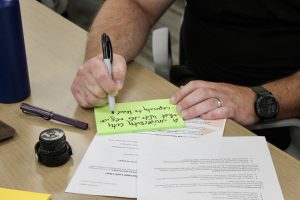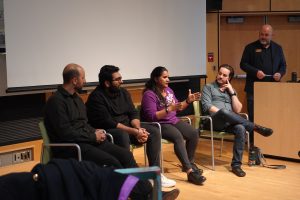What does it look like to step outside of silos? At the 19th annual State of the Island Economic Summit, Municipal officials, business leaders and community representatives from many Island communities gathered in Nanaimo to plan, connect, learn, and grow together.
One Island, Acting as One Region
One recurring theme was the Island beginning to act as a unified region, with many conversations exploring how coordinated action could strengthen Vancouver Island’s presence on the international stage and enhance its appeal to investors.
Why a Regional Perspective Matters
That regional perspective matters because thinking of Vancouver Island as a single, interlinked place changes both the questions we ask and the answers we can deliver.
A Living Systems Lens on the Economy
A living systems approach treats the economy as a web of relationships, not a set of isolated cities and communities. It asks what helps networks self-organize and how local assets can be combined so the whole system is more resilient and regenerative than its parts.
Building Investable Regional Cases
Framing Vancouver Island as a coherent region is not just theory, it’s smart self-promotion. The Vancouver Island Economic Alliance and partner organizations have been building business cases, mapping supply chains, and developing tools to market Island opportunities to international investors.
Turning Strategy Into Market Propositions
Those efforts show how shared strategy can turn local strengths into investable propositions that speak to buyers and partners in markets as far away as Korea and Brazil.
Why Does Regional Cooperation Help Attract Foreign Direct Investment?
First, investors want scale and clarity. Single-city pitchbooks can feel fragmented. A coordinated regional offer, with vetted business cases and clear logistics, reduces friction and raises credibility.
Second, mechanisms such as a Foreign Trade Zone or regionally packaged supply chain projects lower costs and speed market access.
Third, trade and investment offices and provincial partners make it easier to translate local projects into international opportunities if the region speaks with a single, evidence-based voice. These are not abstractions. Research and provincial programs show that FDI can create supply chain links, jobs, and export opportunities when the local offering is clear and well-packaged.
High-Leverage Actions to Stitch Offers
If the Island is going to “pop up” in Seoul, Sao Paulo, or Tokyo, it will come down to practical moves that stitch municipalities into a coherent offer. A few high-leverage steps:
- Build joint, sectoral business cases that cross municipal boundaries. Pick clusters where the Island already has depth, for example clean technology, advanced wood products, aquaculture, and tourism, and demonstrate scalable demand.
- Translate cases into investor-ready materials. Include site readiness, workforce pathways, regulatory clarity, and logistics. Investors do not buy good stories. They buy credible, verifiable readiness.
- Use existing trade mechanisms and partners. Work with provincial trade representatives, Invest BC channels, and a Foreign Trade Zone to open market doors and explain tariff and logistics advantages.
- Coordinate outward-facing branding without erasing place. Let Nanaimo, Port Alberni, Victoria and other communities keep their local personalities while appearing together in investor outreach. A coherent regional fact base plus distinct local stories is stronger than either alone.
- Create regular, funded touchpoints with target markets. Trade missions, virtual investor briefings timed to major sector conferences, and curated site visits are how international interest becomes a project on the ground.
Governance, Trust and Pilot Projects
All of this hinges on governance and trust. A living systems perspective suggests designing for reciprocity, feedback, and iteration. Start with pilot projects that link two or three communities and document the outcomes. Use those pilots to refine incentives, build a playbook, and show investors that cooperation produces measurable value.
Representing Vancouver Island to the world is an exercise in design as much as it is in sales. It is less about masking differences and more about framing them as a unified offering. The Island’s natural assets, potential, skilled people, and niche industries become more investable when they are presented as parts of a single, adaptive system rather than single cities.
If the summit showed us anything, it is that the will to do this work is already in the room. Now the work is to turn intention into coordinated, evidence-based offers the world can act on.



